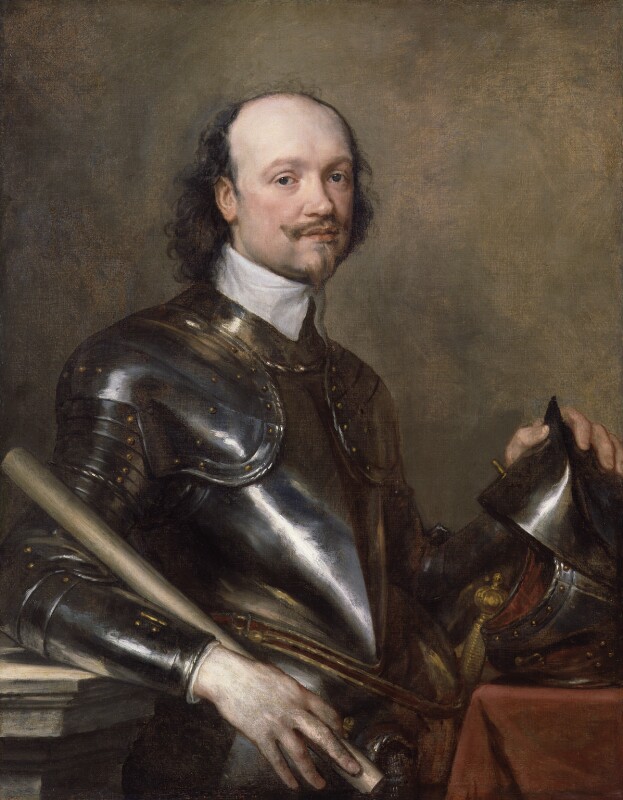23 November 2018
‘careless workemanship’: Sir Kenelm Digby’s devastating critique of Van Dyck’s pictures
‘Too hasty’ and ‘careless workemanship’: Sir Kenelm Digby’s devastating critique of £880 worth of pictures which ‘did soe fayle in colour’ he bought from Van Dyck. Perhaps the legendary lost paintings Digby named to Van Dyck’s early biographer Bellori.
The JVDPPP UK Archival Research Team has discovered a highly significant, previously unpublished description of some lost English paintings by Van Dyck, in the court testimony of Sir Kenelm Digby. Digby was Van Dyck’s great friend and patron, to whom, according to the account that Digby later gave to Giovanni Bellori ‘he entrusted every turn of his fate.’1
This new critique of Van Dyck’s paintings is highly interesting, both as a contemporary reaction to the rapid, thinly-brushed, technique that Van Dyck developed to meet the demands of his English practice, and because it may refer to lost religious and mythological paintings that Digby described to Bellori.
The source is a 1655 court case, part of the half century of Chancery suits in which Justina Van Dyck – and after her death in 16882 her heirs and executors – tried to obtain compensation for her inheritance, embezzled by her step-father Sir Richard Price Bt in order to pay his own debts.3
In Stepney v Digby 16554, Justina Van Dyck’s father-in-law Thomas Stepney sues Sir Kenelm Digby on Justina’s behalf for an unpaid debt of £880, owed to Van Dyck’s estate for paintings that Digby commissioned. Digby does not deny that he took possession of the paintings, but disputes their value:
‘the debt of Eight hundred and Fourscore pounds in the Bill mencioned to be due from this Defendant unto Sr Anthony Vandicke in the Bill named become due and payable for some pictures made and sold by the sayd Sr Anthony Vandicke to this Defendant: Which pictures did soe fayle in Colour and were otherwise soe ympared by reason as this Defendant beleiveth of too hasty or carelesse workemanshipp of them that they were of very small value to be sold and the sayd pictures were and are of Little or noe Ornament and of noe pleasure or handsomenes and by reason thereof this Defendant hath very often offered for to deliver upp the sayd pictures soe hee might be freed and discharged of the sayd debt and have his bond and security delivered upp unto to this Defendant’
The number and subject of the paintings are not specified. £880 is a considerable sum, however, and comparing the value that Van Dyck sets on his paintings it suggests several large canvases. In 1632 Van Dyck had been paid £150 for a multi-figure Royal portrait known as The Great Peece, and in his Memoire of pictures still unpaid for by the King in 1638, the full-length Roi à la chasse is valued by Van Dyck at £200 but marked down by the King to £100 (see the memorandum here).5
It seems probable that, since he was unable to sell them in London, Digby took these pictures with him to France in 1643. Bellori records that he gave a Crucifixion to Princess Guéméné in Paris, and lists other Van Dyck’s belonging to Digby as: a Deposition of Christ with SS Joseph, Nicodemus, Mary and the Magdalene, a St John the Baptist in the desert, a Magdalene in ecstasy at the music of two Angels, a Judith with the Head of Holofernes, and a lady as Pallas in a plumed helmet.6
Whether Digby took any of these paintings with him to Rome as Queen Henrietta Maria’s envoy in 16457 and 1646-48 is unknown but it is a tantalising possibility that some of these works await rediscovery in public or private collections, perhaps unrecognised due to their controversial technique.
James Innes-Mulraine
How to cite: Innes-Mulraine, James, edited by Davies, Justin. “‘careless workemanship’: Sir Kenelm Digby’s devastating critique of Van Dyck’s pictures” In Jordaens Van Dyck Panel Paintings Project.
jordaensvandyck.org/stepney-v-digby-1655/ (accessed 14 December 2025)
© Jordaens Van Dyck Panel Paintings Project (terms and conditions)
Notes
- Giovanni Bellori Le Vite de Pittori Scultori et Architetti Moderni (Rome 1672) p.260; translation Susan J. Barnes, Nora De Poorter, Oliver Millar, Horst Vey Van Dyck: A Complete Catalogue of the Paintings Yale University Press 2004, IV 94, p.504
- Carbonnel v Price 1695 TNA C 5/150/3
- The pattern of this litigation has been established by Christopher Brown and Nigel Ramsay, but as they acknowledge ‘the relevant records have survived only patchily and are largely unindexed. (Christopher Brown and Nigel Ramsay ‘Van Dyck’s Collection: Some New Documents’, Burlington Magazine, Vol 132, No.1051, October 1990 p.704 n.3)
- Stepney v Digby 1655 TNA C 5/404/299
- TNA E 403/2751 f.180; TNA SP 16/406 (available on the JVDPPP website)
- Bellori 1672 p.261
- Foster, M. (2009, January 08). Digby, Sir Kenelm (1603–1665), natural philosopher and courtier. Oxford Dictionary of National Biography. Retrieved 17 Nov. 2018, from http://www.oxforddnb.com/view/10.1093/ref:odnb/9780198614128.001.0001/odnb-9780198614128-e-7629 Bellori (loc cit.) refers to Digby as resident in Rome during the Pontificate of Pope Urban VIII, who died in 1644


